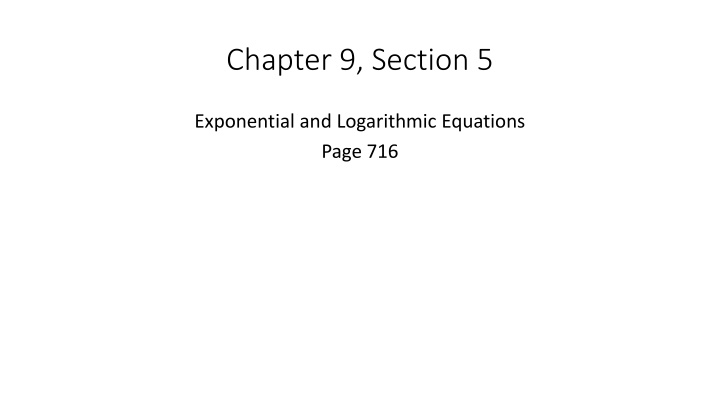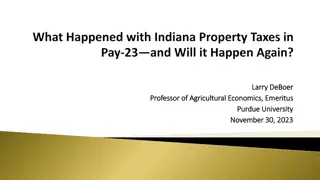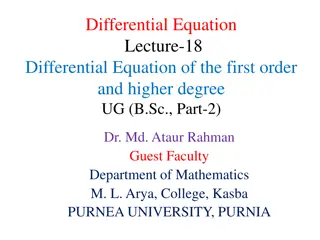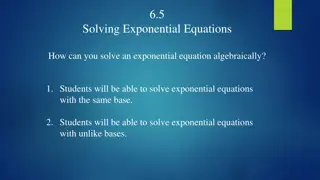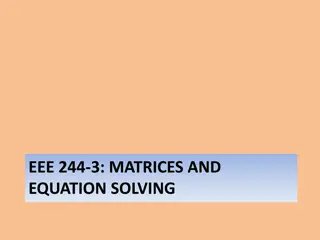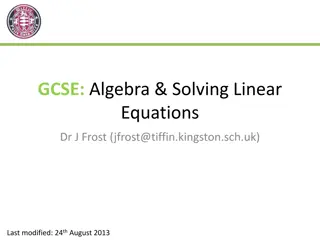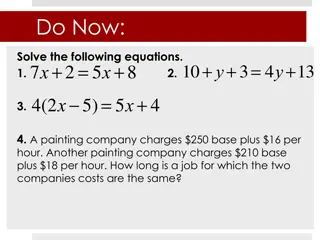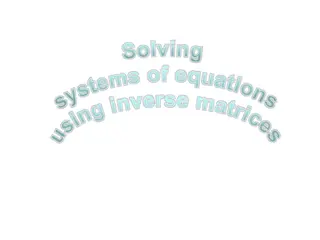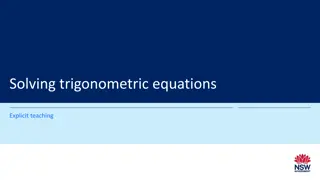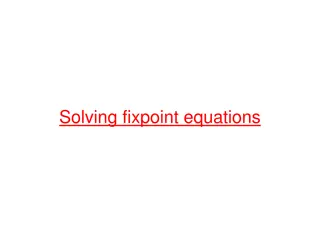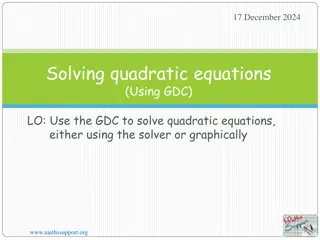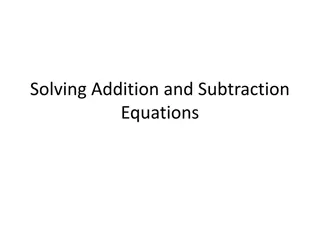Solving Multi-Step Equations: Distributive Property, Combining Like Terms, Inverse Operations
Learn to solve multi-step equations through the Distributive Property, combining like terms, and inverse operations. Practice creating equations for real-world situations. Includes step-by-step examples and checks for solution correctness. Improve your equation-solving skills with various scenarios and formula challenges.
Download Presentation

Please find below an Image/Link to download the presentation.
The content on the website is provided AS IS for your information and personal use only. It may not be sold, licensed, or shared on other websites without obtaining consent from the author.If you encounter any issues during the download, it is possible that the publisher has removed the file from their server.
You are allowed to download the files provided on this website for personal or commercial use, subject to the condition that they are used lawfully. All files are the property of their respective owners.
The content on the website is provided AS IS for your information and personal use only. It may not be sold, licensed, or shared on other websites without obtaining consent from the author.
E N D
Presentation Transcript
Chapter 9, Section 5 Exponential and Logarithmic Equations Page 716
Definition: Exponential Equation Equation containing a variable in the exponent. Example: 4x=15 16x=64 23x-2=17
Solve: Expression Each Side has Same Base bM=bN? then? M=N If 1) Rewrite with the same base 2) Set Exponents equal 3) Solve for the variable
Example Solve the equation: 4x=32 Solution: Rewrite with same base: Since: Equation becomes: Thus, 2x = 5 And x = 2 4=22? and? 32=25 22x=25 5
Try Solve the equation: 53x-6=125 a) b) 9x=27
Using Logarithms to Solve Exponential Equations Isolate the exponential expression Take the common or natural logarithm on both sides of the equation Simplify by using the properties. Solve for the variable.
Example 5x=17 Solve the equation: Solution: Pick your base and take the logarithm of both sides. log? 5x=log? 17 ln? 5x=ln? 17 Use the power rule. x? log? 5=log? 17 x? ln? 5=ln? 17 Solve for x: x=log? 17 x=ln? 17 ln? 5 log? 5
Try 4x=19 a) 10x=120? 000 b)
Definition: Logarithmic Equations Equations containing a variable in a logarithmic expression. Example: ln (x + 2) = ln x ( )=2 log4x+3
Solve Logarithmic Equations logbM=c Express the equation in the form: Use the definition of a logarithm to rewrite the equation in exponential form. Solve for the variable Check proposed solutions with original equation. Note: M > 0
Example ( )=2 log4x+3 Solve: Solution: Rewrite in Exponential form: Solve the equation 42=x+3
Try Solve the equations: a) 5? ln 2x ( )=20 ( )+log3x+3 ( )=2 log3x-5 b)
Summary Exponential Equations Same base Different base Logarithmic Equations Isolate the logarithm Use the definition of the logarithm Solve
